Zhangjiajie, located in the northwestern part of Hunan Province, China, is renowned for its breathtaking landscapes and distinctive geological formations. This city has become one of the most popular tourist destinations, attracting visitors from all over the world. It is home to the first national forest park in China and was inscribed as a UNESCO World Heritage Site in 1992. Zhangjiajie is often referred to as "a paradise on earth" and is famous for its towering quartz-sandstone pillars, verdant forests, deep valleys, and pristine rivers.
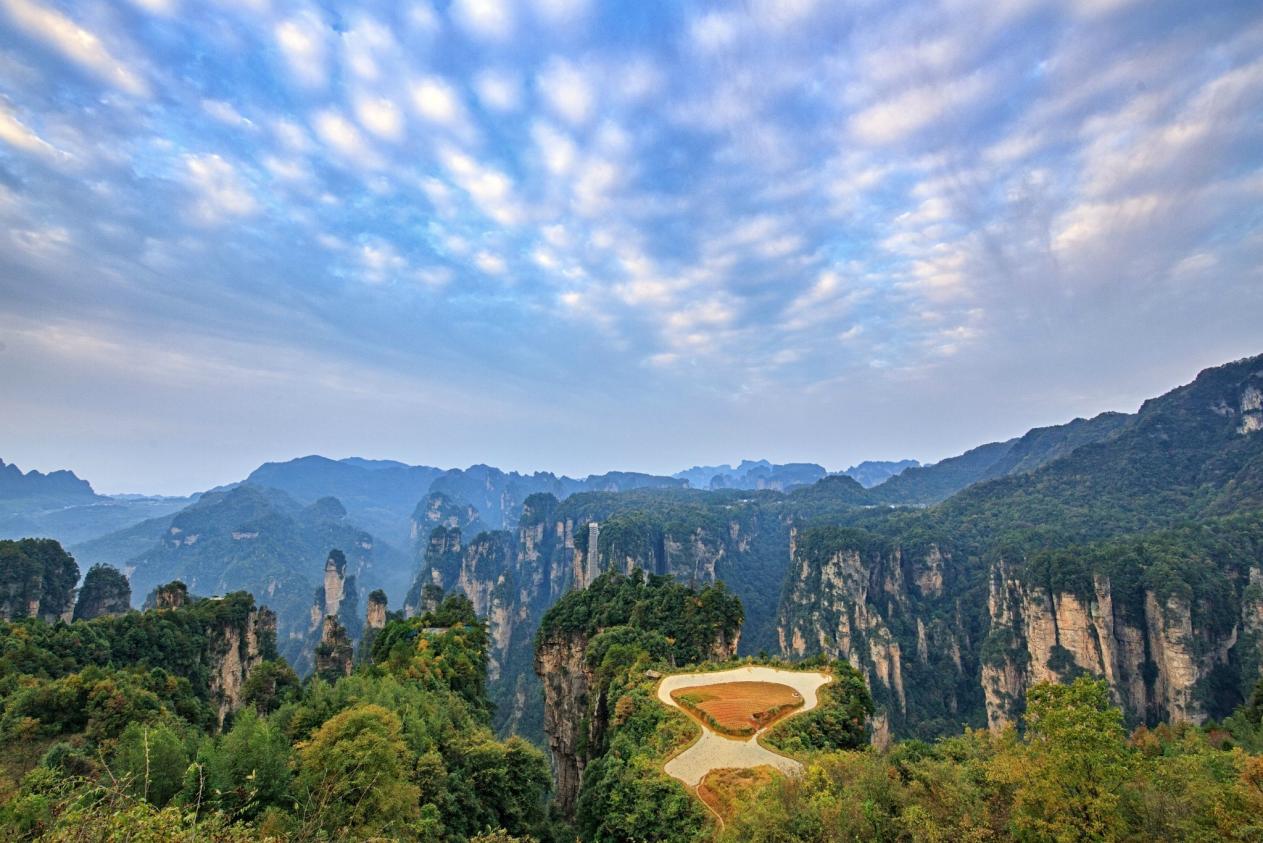
1. Geography and Overview
Zhangjiajie City, though relatively small, boasts some of the most incredible natural scenery in the world. It is located about 330 kilometers (205 miles) from Changsha, the capital of Hunan Province, and is easily accessible by both rail and air. Zhangjiajie's unique topography, dominated by the Wulingyuan Scenic Area, is known for its thousands of vertical sandstone peaks, some of which rise more than 1,000 meters (3,280 feet) above the surrounding forests. This area covers over 400 square kilometers and is often described as a surreal, almost otherworldly landscape.
2. Major Attractions
Wulingyuan Scenic Area
The Wulingyuan Scenic Area is Zhangjiajie's most famous attraction and a key part of its natural heritage. Spread over 26,000 hectares, this area is home to more than 3,000 towering sandstone pillars, some shrouded in mist, giving the area a mystical ambiance. The sandstone formations, coupled with lush forests, deep ravines, caves, and serene streams, make Wulingyuan a unique destination. Highlights of this area include:
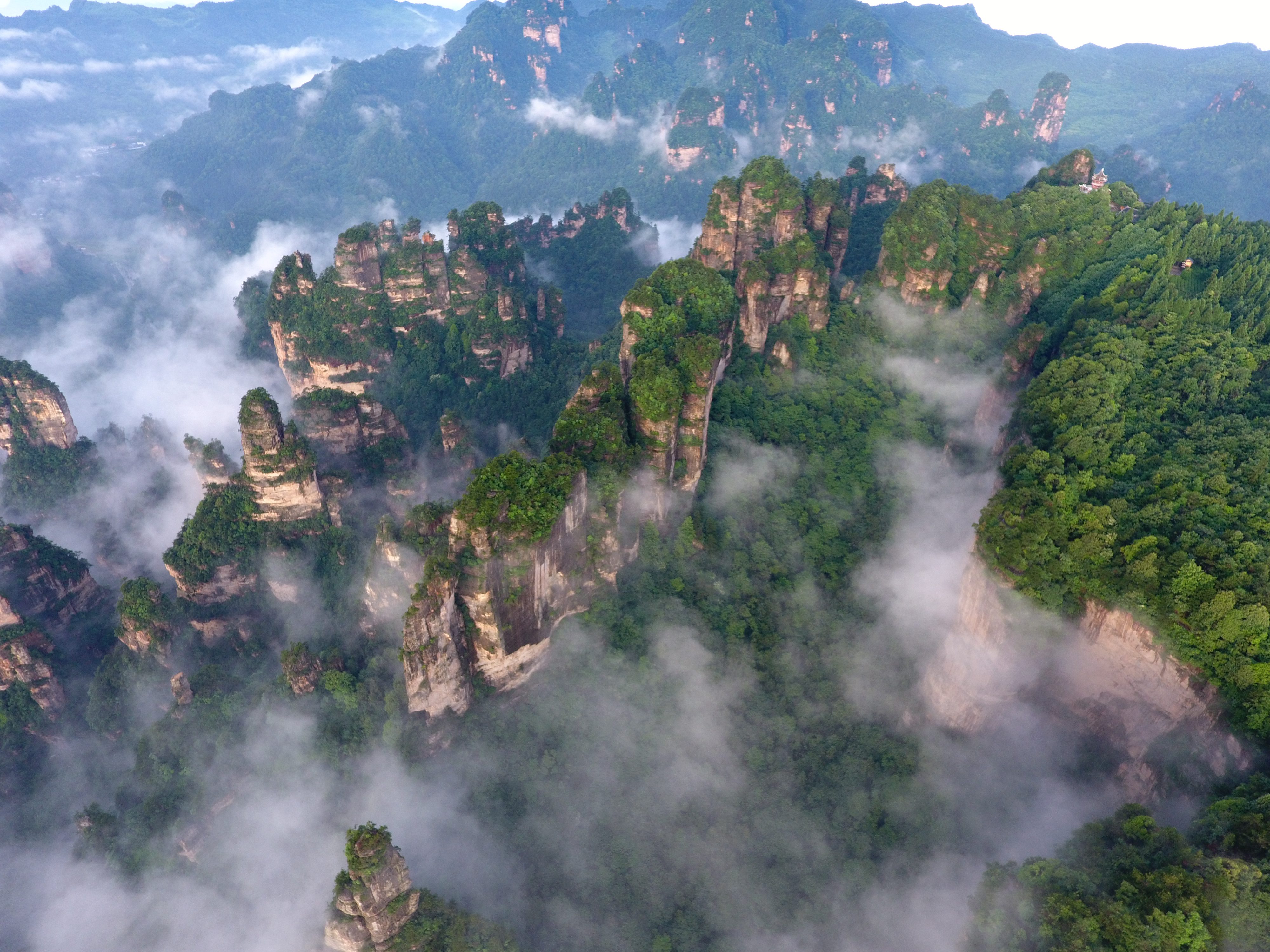
- Zhangjiajie National Forest Park: This is China's first national forest park, known for its steep cliffs, thick foliage, and scenic spots such as the Golden Whip Stream and Yuanjiajie, which was the inspiration for the Hallelujah Mountains in the movie Avatar.
- Tianzi Mountain: The "Emperor Mountain" offers panoramic views of peaks that seem to float in the clouds. The area is renowned for its four natural wonders: the seas of clouds, sunrises, snow-covered peaks in winter, and changing fog patterns.
- Bailong Elevator: Recognized as the world's highest outdoor elevator, the Bailong Elevator offers visitors a thrilling ride up a cliff face, rising 326 meters (1,070 feet) in less than two minutes. From the top, tourists can witness unparalleled views of the Zhangjiajie landscape.
Tianmen Mountain
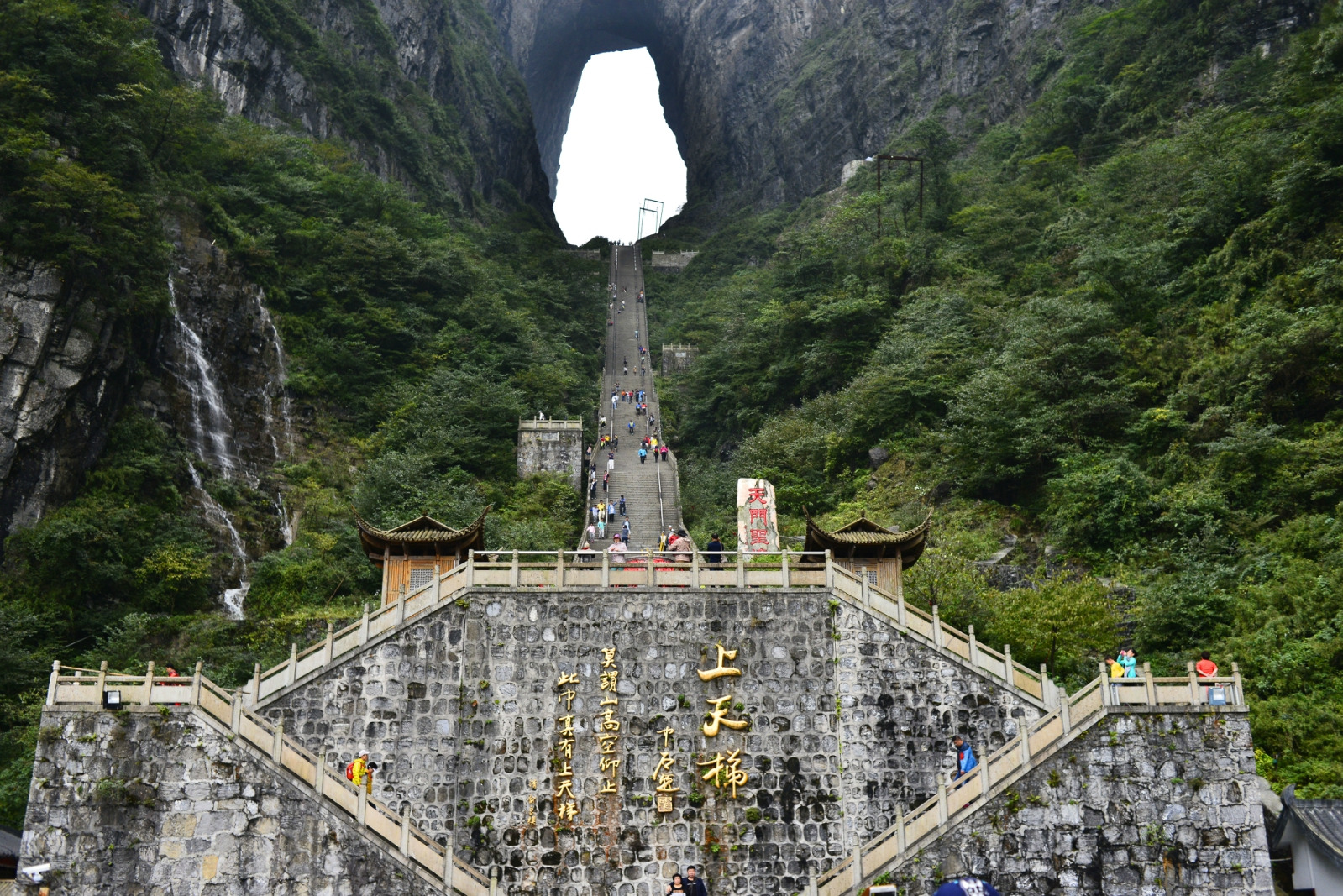
Another major highlight of Zhangjiajie is Tianmen Mountain, often referred to as the "soul" of Zhangjiajie. It is famous for its large natural arch known as Tianmen Cave, or "Heaven's Gate," a rock hole 131 meters high and 30 meters wide. The mountain is accessible via the world's longest cable car ride, which stretches over 7.5 kilometers (4.7 miles), offering a bird's eye view of the surrounding peaks and valleys. At the summit, visitors can walk along glass-bottomed walkways attached to the cliffs, providing heart-stopping views below.
Zhangjiajie Glass Bridge
The Zhangjiajie Glass Bridge, another must-see attraction, is the longest and highest glass-bottomed bridge in the world. Spanning the Grand Canyon of Zhangjiajie, the bridge stretches 430 meters (1,410 feet) long and hangs 300 meters (984 feet) above the canyon floor. Walking across the transparent bridge offers an exhilarating experience and stunning views of the canyon beneath.
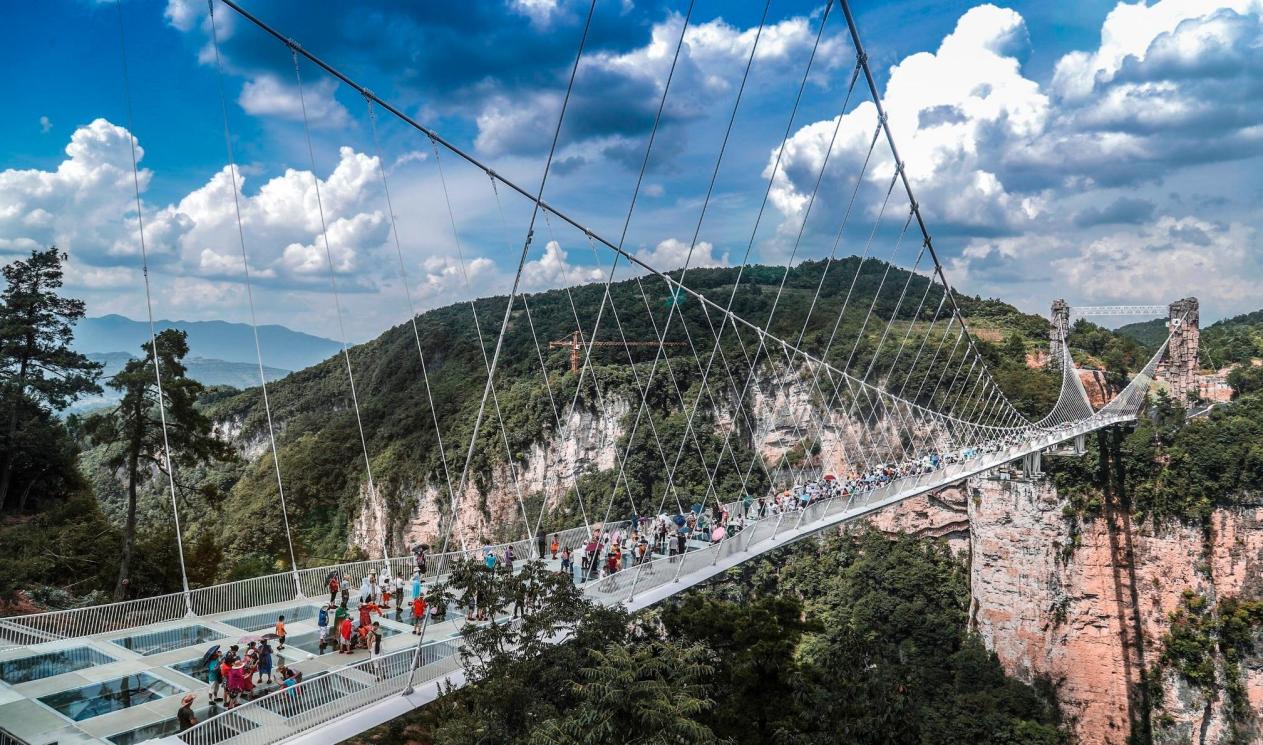
3. Unique Flora and Fauna
Zhangjiajie is not only known for its geological formations but also for its biodiversity. The area is home to over 500 animal species, including the rare Chinese giant salamander, macaques, and many bird species. The dense forests are also home to a wide variety of plants, with more than 700 species of trees, flowers, and medicinal herbs, many of which are endemic to the region.
4. Cultural Significance
Zhangjiajie is not only a haven for nature lovers but also rich in cultural heritage. The area is inhabited by various ethnic minority groups, including the Tujia, Miao, and Bai people. These groups have preserved their unique customs, traditional music, and dances for centuries. Visitors can explore local villages, witness colorful festivals, and enjoy performances that highlight the vibrant culture of these communities.
The Tujia people, in particular, are known for their intricate wood carvings, handicrafts, and distinctive architecture, which can be seen in traditional stilted houses built along mountain slopes.
5. Best Time to Visit
Zhangjiajie is a year-round destination, but the best time to visit is during spring (April to June) and autumn (September to November). During these seasons, the weather is mild, and the natural scenery is at its most vibrant. Spring offers a landscape covered in blossoming flowers and greenery, while autumn is known for its clear skies and colorful foliage. Winter in Zhangjiajie brings snowfall to the mountain peaks, creating a magical, serene atmosphere, though temperatures can be quite cold.
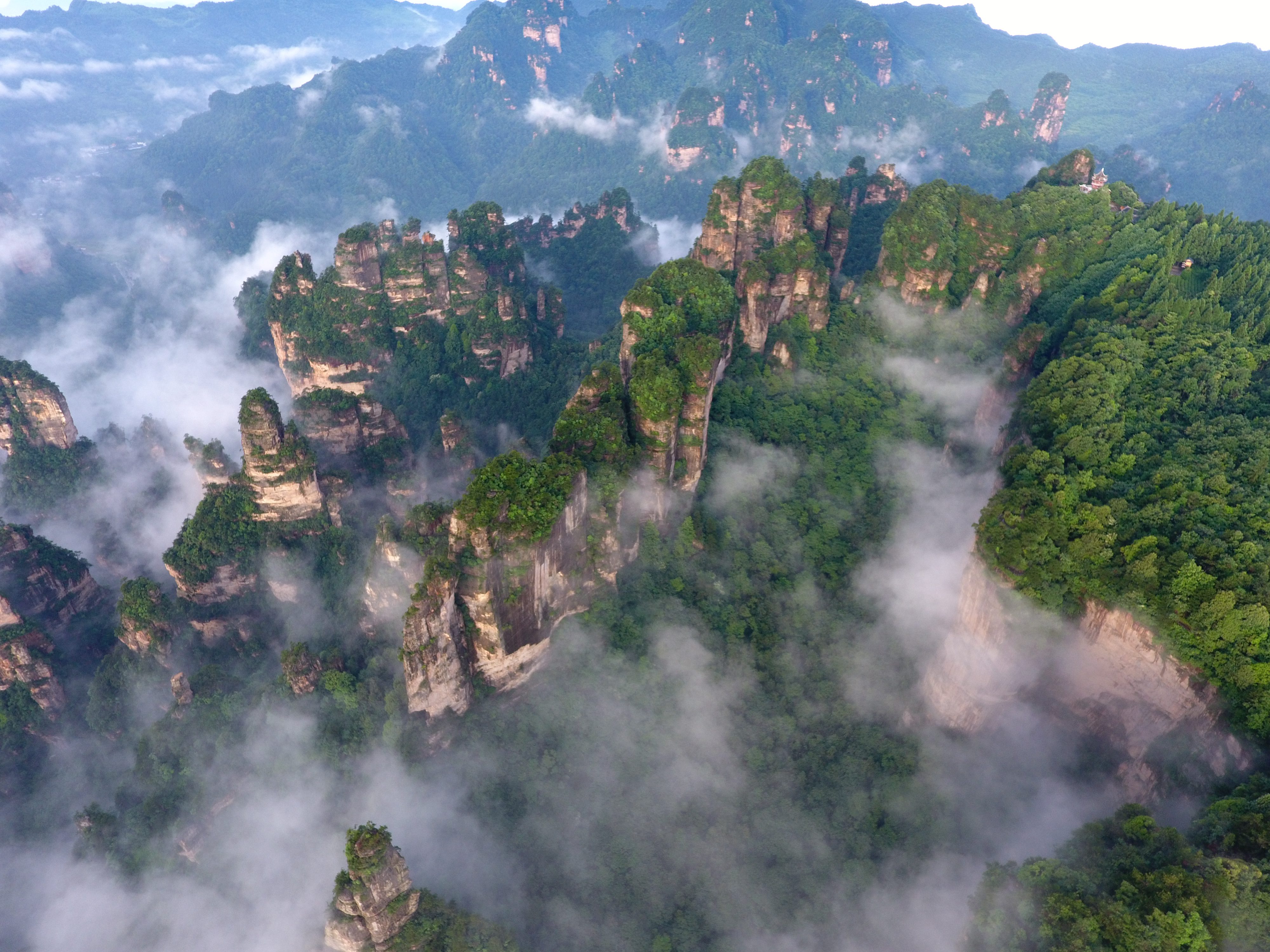
6. Adventure and Ecotourism
For adventurous travelers, Zhangjiajie offers numerous opportunities for outdoor activities such as hiking, rock climbing, and zip-lining. The scenic area has many well-maintained hiking trails that wind through the mountains and forests, offering spectacular viewpoints along the way. Some trails lead to hidden waterfalls, caves, and lesser-known parts of the park that offer a sense of solitude and serenity.
Ecotourism is also promoted in Zhangjiajie, with sustainable practices aimed at protecting the environment while allowing visitors to experience its beauty. The local authorities have implemented measures to preserve the region's natural resources, ensuring that tourism does not degrade the pristine ecosystems of the park.
7. Conclusion
Zhangjiajie is a stunning destination that combines extraordinary natural beauty with rich cultural heritage. Its otherworldly landscapes, including mist-shrouded mountains, towering sandstone pillars, and lush forests, offer a unique experience for nature lovers, adventure seekers, and anyone interested in exploring one of China's most awe-inspiring regions. Whether you are walking among the cloud-piercing peaks of Wulingyuan, riding the world's longest cable car to the top of Tianmen Mountain, or gazing through the glass-bottomed Zhangjiajie Bridge, this city leaves an unforgettable impression on all who visit.



